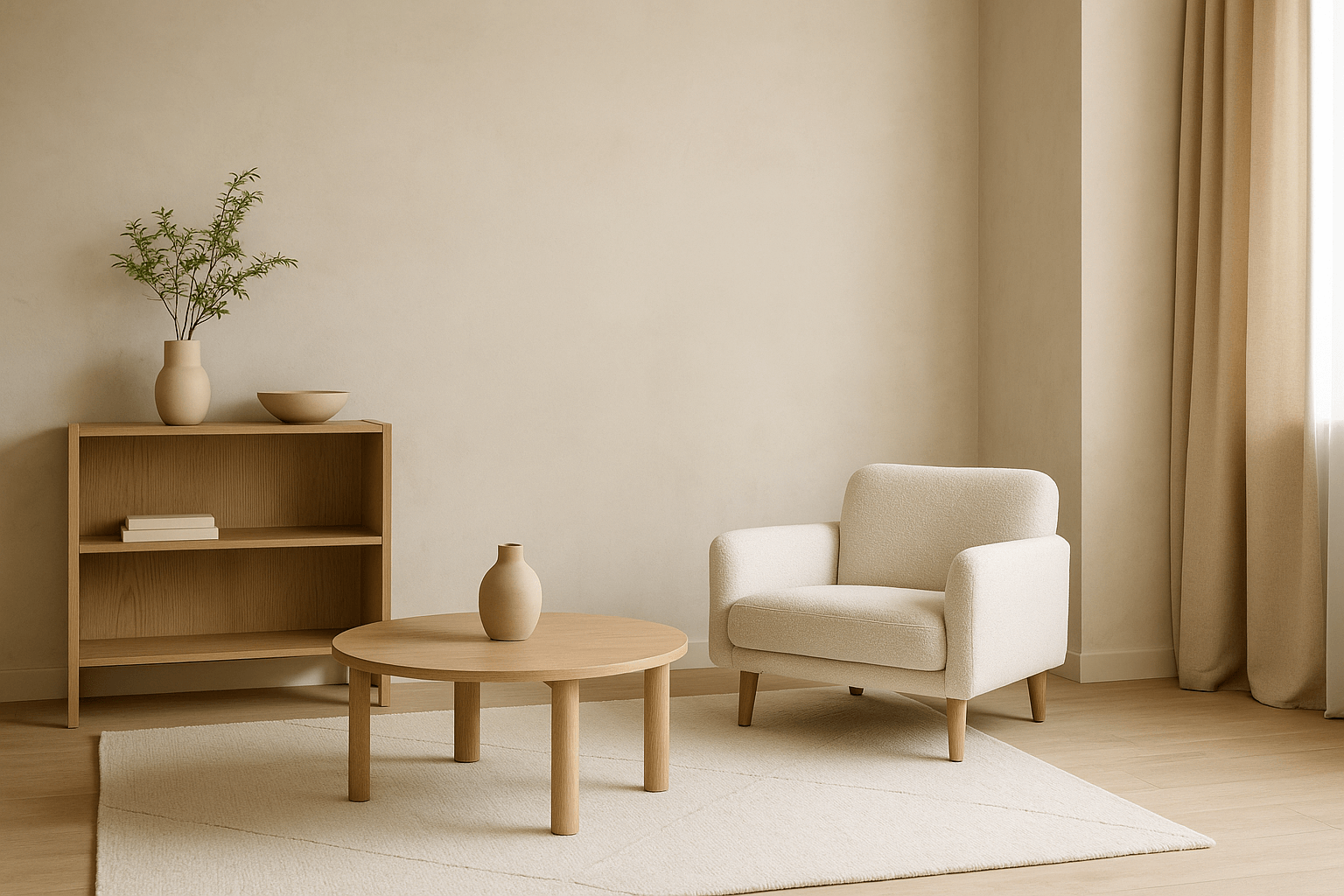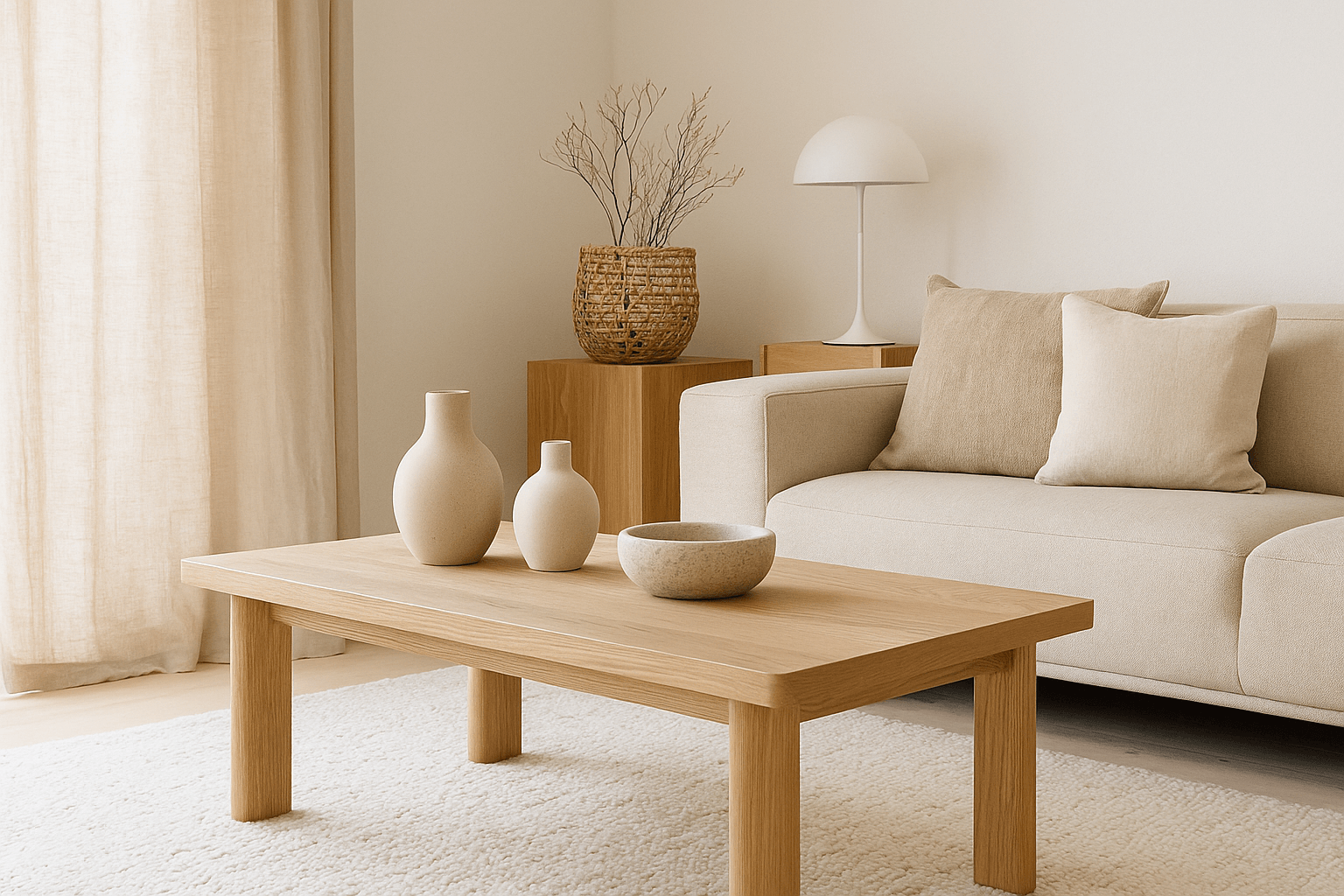What Does It Mean to Have a Cohesive Home?
A cohesive home doesn’t mean every room looks the same—but it does mean each space flows naturally into the next. In minimalist design, this unity is even more important. With fewer visual elements, every choice stands out—and the relationships between rooms become more noticeable.
Creating cohesion in a minimalist home is about balance, repetition, and restraint. It helps your space feel calmer, more thoughtful, and easier to live in.
Why Cohesion Matters in Minimal Design
-
It supports mental clarity by removing visual friction and cluttered transitions.
-
It enhances simplicity, letting key pieces shine without distraction.
-
It builds atmosphere, so your entire home feels like a unified sanctuary—not a collection of disconnected styles.
Room-by-Room Guide to Minimalist Cohesion
Living Room
-
Color: Use a neutral foundation—white, taupe, greige—with accent tones repeated elsewhere in the home.
-
Furniture: Choose pieces with clean lines and avoid overfurnishing.
-
Details: Introduce a few natural textures like linen or oak, and repeat them in adjacent rooms for flow.
Kitchen
-
Keep surfaces clean and clutter-free.
Hide appliances and utensils behind cabinets or drawers. -
Use cohesive materials like matte black or brushed brass across handles, faucets, and lighting.
-
Color and texture carryover: If you use light oak in your living space, carry that tone into bar stools or shelving.
Bedroom
-
Simplify the palette to soft, restful hues like warm grey, beige, or muted clay.
-
Match lighting tones: Use warm light bulbs and minimalist lamps in the same tone/style as elsewhere in the house.
-
Textiles: Let bedding and curtains echo materials from your living area—linen, wool, cotton in neutral tones.
Bathroom
-
Neutral doesn’t mean boring: Use natural stone, wood trays, or matte black fixtures for quiet elegance.
-
Repeat finishes from the kitchen or bedroom—consistency in details helps small rooms feel connected to larger ones.
-
Limit visible products: Store items out of sight and display only essential or beautiful objects.
Entryway
-
Set the tone: This space introduces your home's aesthetic.
-
Use a mirror, one bench or chair, and concealed storage to keep it functional but minimal.
-
Bring in textures or colors used deeper in your home to preview what’s to come.
Tips for Whole-Home Cohesion
-
Stick to 2–3 main materials (e.g., light wood, soft linen, ceramic) throughout the home.
-
Repeat finishes: If you use matte black in one room, use it in others for fixtures or decor.
-
Use lighting consistently: Choose minimalist fixtures with shared design language—like simple domes or cylinders.
-
Let negative space connect rooms: Don’t fill every corner—empty space is part of the flow.
Final Thoughts
Cohesion isn’t about being boring—it’s about creating an intentional experience. In a minimalist home, where every choice is amplified, cohesion brings rhythm, comfort, and calm. When your rooms speak the same language, your home becomes more than a collection of spaces—it becomes a sanctuary.
















